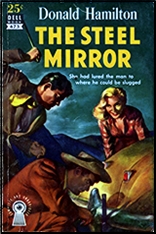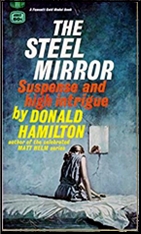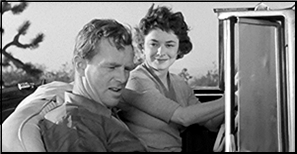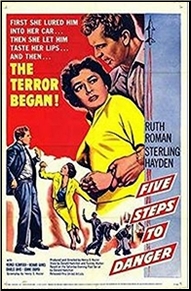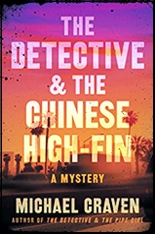REVIEWED BY DAVID VINEYARD:
KERRY GREENWOOD – Murder on the Ballarat Train. Phryne Fisher #3. Poisoned Pen Press, US, October 2006). Trade paperback, September 2011. Originally published in Australia, 1991. TV adaptation: Season 1, Episode 2 of Miss Fisher’s Murder Mysteries, 02 Mar 2012. Essie Davis (Phryne Fisher), Nathan Page, Ashleigh Cummings.

Fortunately, the Hon. Phryne Fisher was a light sleeper. She had dozed for most of the journey, but when the nauseating odour of chloroform impinged on her senses, she had sufficient presence of mind to realize that something was happening while she still had wits enough to react.
Reaching over the slumbering form of her maid and companion, Dot, she groped for and found her handbag. She dragged it open, moving as though she were five fathoms under water. The clasp of the handbag seemed impossibly complex, and finally, swearing under her breath and gasping for air, she tore it open with her teeth, extracted her Beretta .32 with which she always travelled, and waveringly took aim. She squeezed off a shot that broke the window.
This is a not untypical introduction to the remarkable Honorable Miss Phryne (rhymes with Briny) Fisher, modern liberated woman par excellence, 1920’S style: beautiful (she resembles Louise Brooks down to the hair do), smart, a crack shot, expert at self defense, incredibly rich, and a private detective to boot. If you crossed Miss Marple with Honey West and Emma Peel you wouldn’t be far off the attractive Miss Fisher.
If you don’t know the series (currently running on Netflix, and on Acorn a modern descendant of Miss Fisher is now in her first season) you may well have seen the attractive covers for the books and decided it was yet another cozy series, this one set in Australia in the twenties, but Miss Fisher is anything but cozy.

With an eye (and more) for an attractive young man, absolute certainty in her chosen crusade, spirit, and brains, this is no blushing shy violet crocheting and quilting while solving crimes with her cats. With her secretary and friend Dot, her two adopted daughters, her two-fisted butler Mr. Butler, her snobbish often appalled Aunt, and her two Union organizer muscle men and operatives Bert and Cec (pronounced “Cease†as in Cecil), Miss Fisher has taken on everything from Union disputes to Antisemitism, sex traffic, organized child molestation, serial killers, bank robbery, murder at the circus, and theatrical murders while romancing pilots, a handsome Chinese silk merchant, and any variety of men and flirting outrageously with the frustrated Inspector Jack Robinson, Miss Fisher triumphs, and on her own terms.
Here Phryne discovers she and Dot, on the way to a county fair in Ballarat, have been drugged along with the rest of the passengers. After stopping the train and helping administer aid to the others she discovers one young woman was more deeply drugged and her mother, Mrs. Henderson, a difficult woman at best, is missing from the train.
A brief backtrack reveals Mrs. Henderson, hanging from a water tower, and quite obviously murdered.

There is no lack of suspects on the train and off, including a harried father and his young son who received mysterious tickets to the fair, the daughter’s Pre Med student fiance Mrs. Henderson disapproved of, and his handsome student friend who might well be counting on his good friend marrying money to cover his gambling debts.
Then too, just about anyone who ever knew Mrs. Henderson might have murdered her. She was that type of woman.
There is also a witness, a runaway girl on the train who isn’t talking, and who becomes the chief focus of Miss Fisher’s interest and eventually one of her two adopted daughters.
Don’t get me wrong, Kerry Greenwood is not Agatha Christie. Most of the mysteries rely more on Miss Fisher’s and companies charm and the well developed social and historical milieu than brilliant mystery plots. They aren’t bad mysteries, but sad to say they won’t exactly tax your mystery solving skills either, though there are well placed and intelligent clues and something very close to fair play.
What the books are is fun, light, playful, sexy, smart, fast moving, crisply written, and hard to lay down until you have finished. Miss Fisher manages to seem to coexist in a world where you might stumble across Peter Wimsey or Albert Campion and in much the same sophisticated style. If not in a class as a puzzler with Sayers or Allingham, she certainly writes well, and Phryne Fisher is a welcome addition to the great detective class.
And it is more than a little fun to watch her tweak the nose of stilted 1920’s Australian social mores and attitudes, whether in print or beautifully played by Essie Davis in the popular series. She may navigate the mean streets in a Hispano-Suzia, but she does so in style.
